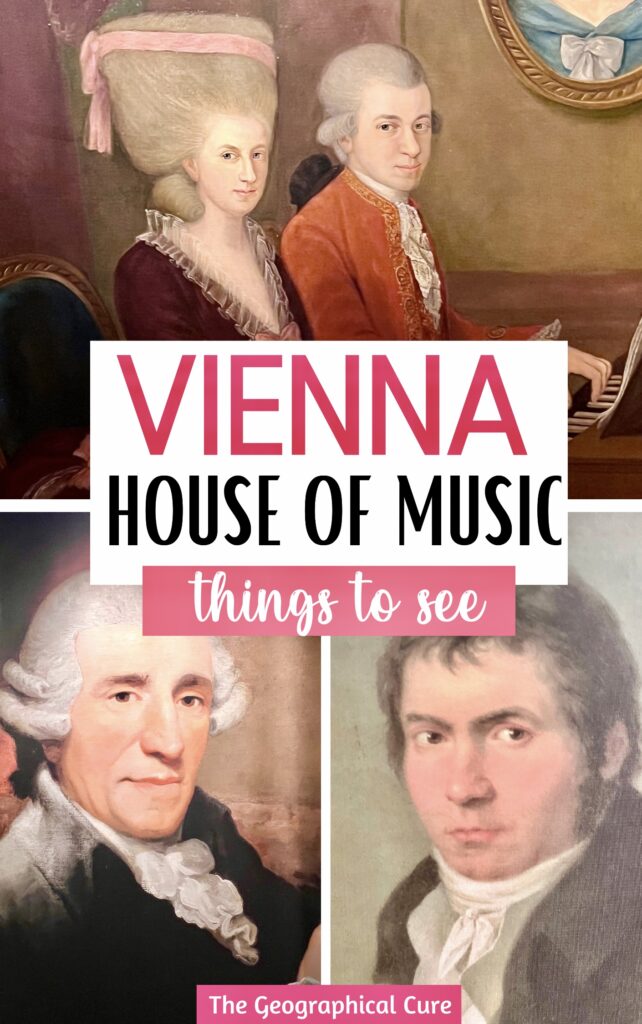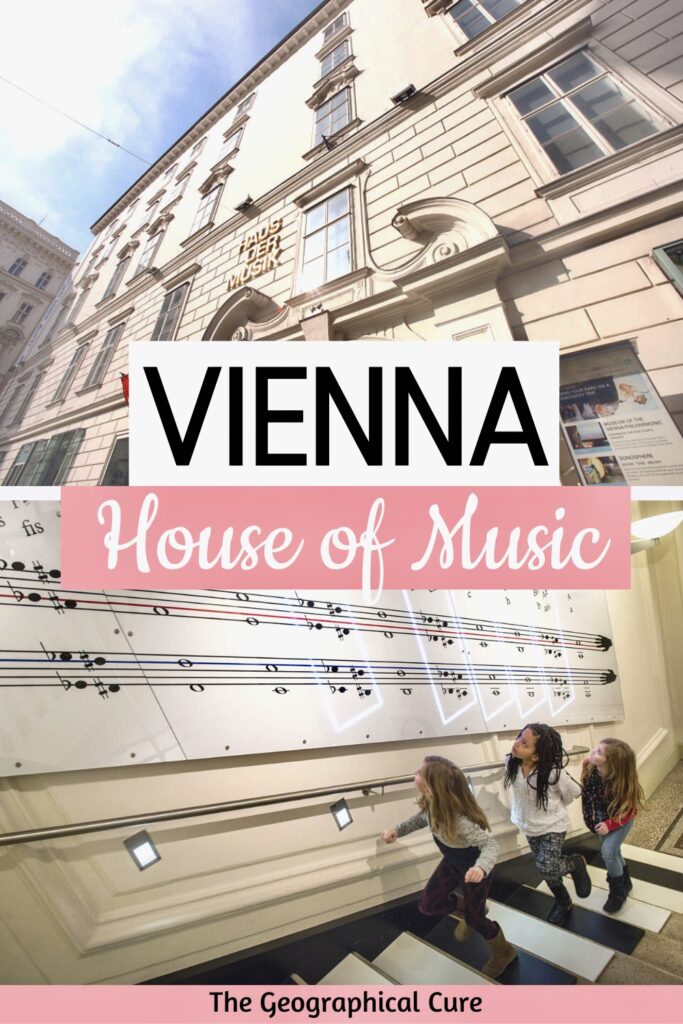Vienna’s House of Music, or Haus der Musik, is a gadget rich interactive sound museum for music fans. Opened in 2000, the museum is designed to foster an understanding of music in both kids and adults. It’s a super fun museum!
The museum uses tactile and scientific exhibits to evoke the emotion and experience of music and explain fundamental buildings blocks. You can compose your own waltz and play with pitch, sounds, and musical instruments.
The museum also houses the historic archives of the Vienna Philharmonic Orchestra. And it has three rooms dedicated to the “great composers” where you learn about and listen to the music of Hayden, Mozart, and Beethoven.
>>> Click here to pre-book a ticket
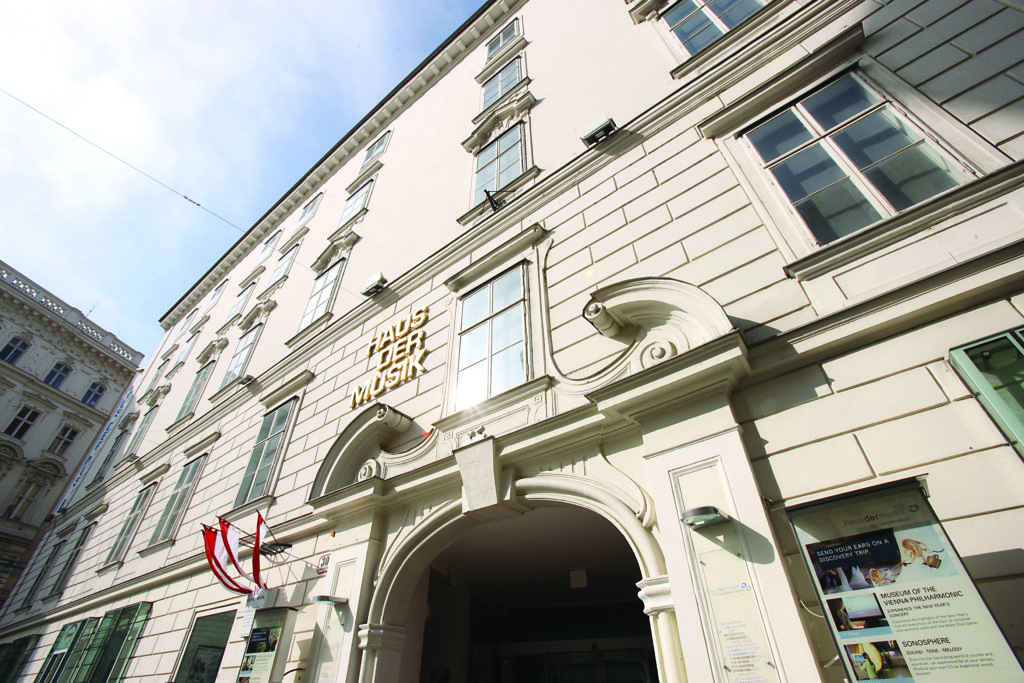
Guide To The House of Music: What To See
Here are the things you can see on a visit to the Haus der Musik.
Overview
The museum houses exhibits over three floors:
- a musical staircase leads to the first floor
- 1st floor: Vienna Philharmonic exhibits
- 2nd floor: Sontopia: exhibits devoted to the physics of sound
- 3rd floor: great composer rooms
- 4th floor: grab a baton and be a virtual conductor
The ground floor just has a ticket office and shop.
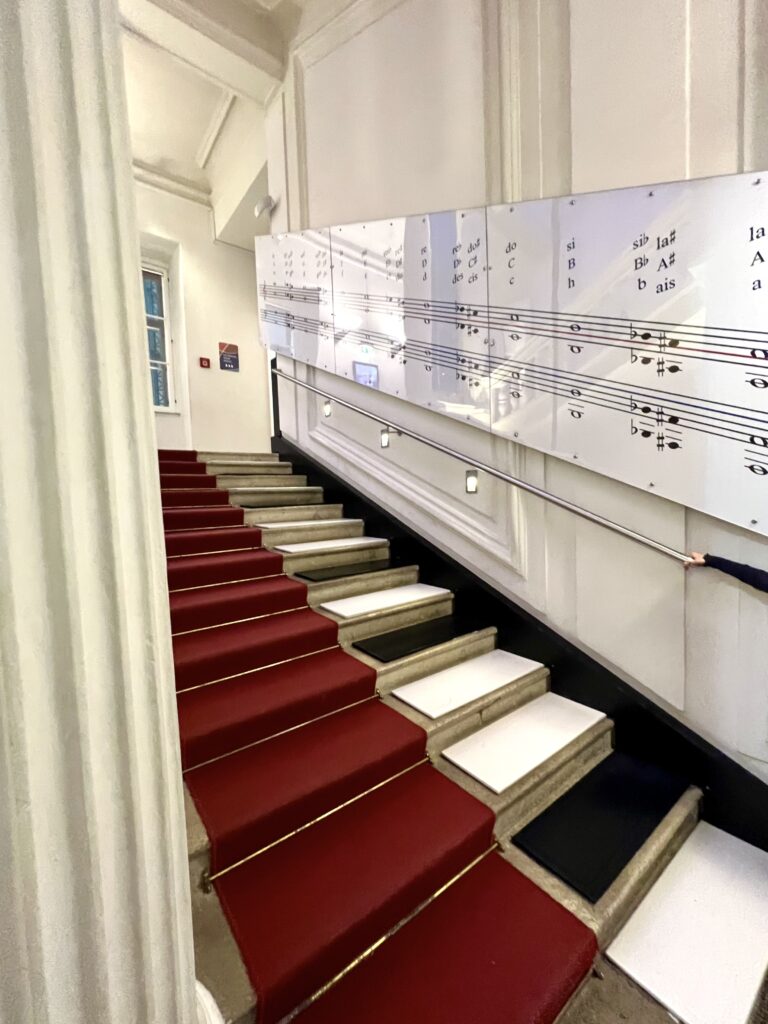
Piano Staircase
This is certainly one of the most popular areas of the museum. It consists of a set of steps, much like a traditional staircase. However, each step is equipped with sensors and sound-producing mechanisms.
As visitors step on them, they trigger musical notes or sounds. Each step corresponds to a specific musical note or sound effect.
You can can use the staircase to create your own melodies or just play with sound effects by walking up and down the steps.
I didn’t see one visitor that could resist the staircase!
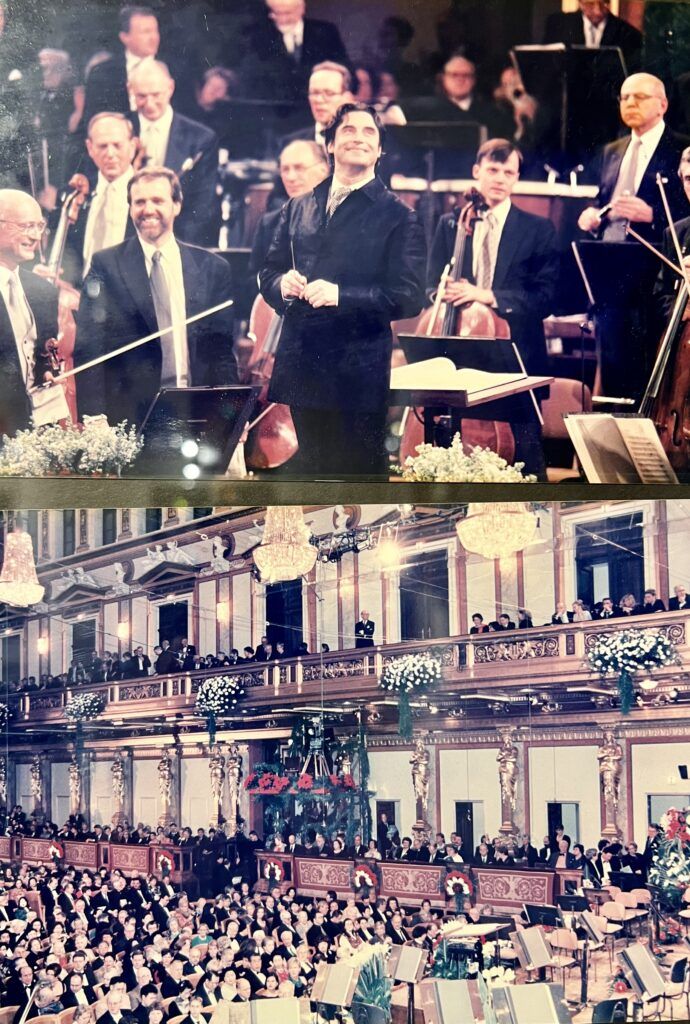
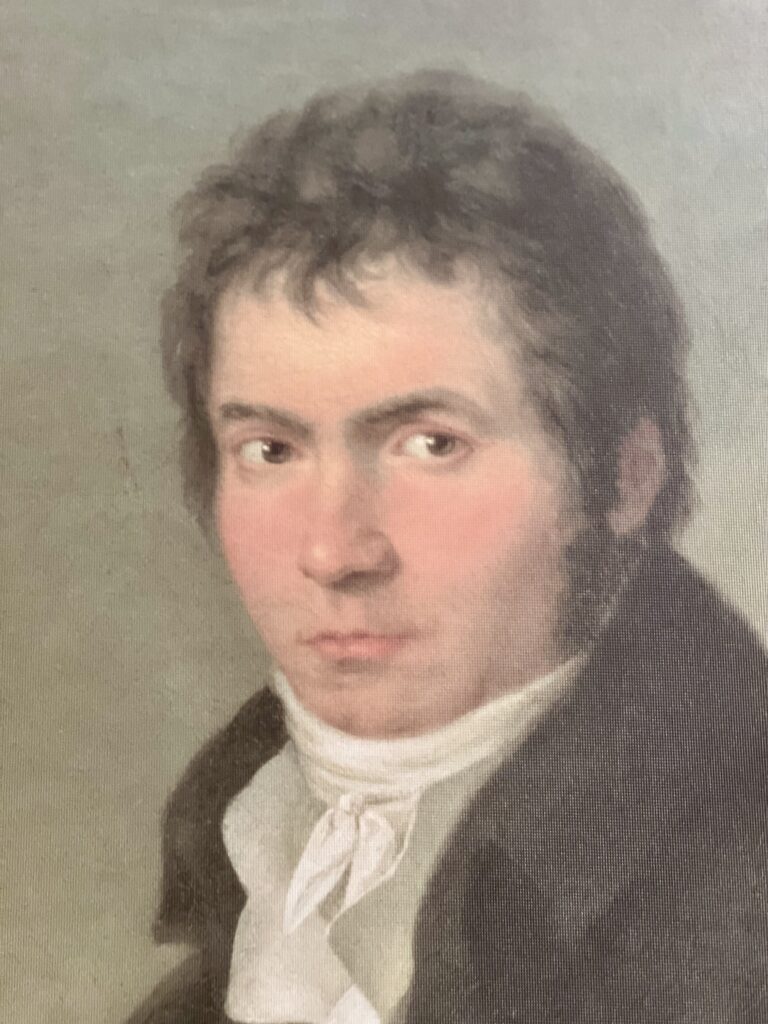
Vienna Philharmonic Exhibit
The first floor has a detailed exhibit about the famous Vienna Philharmonic Orchestra and its concerts in the Golden Hall.
The Vienna Philharmonic is one of the world’s most prestigious and renowned symphony orchestras. Founded in 1842, the orchestra has a rich and illustrious history that spans over a century and a half.
The philharmonic is closely associated with the Vienna State Opera and the Vienna Philharmonic Ball. It plays a significant role in the city’s cultural life.
One of the orchestra’s most iconic traditions is the annual New Year’s Concert. It’s a globally televised event featuring classical music and the famous Strauss waltzes.
You’ll see exhibits on the history of the orchestra and its conductors. There are also posters, batons, musical compositions, photographs, and other artifacts. I saw Richard Wagner’s matchbook, the reading glasses of Johannes Brahms, and Leonardo Bernstein’s tux.
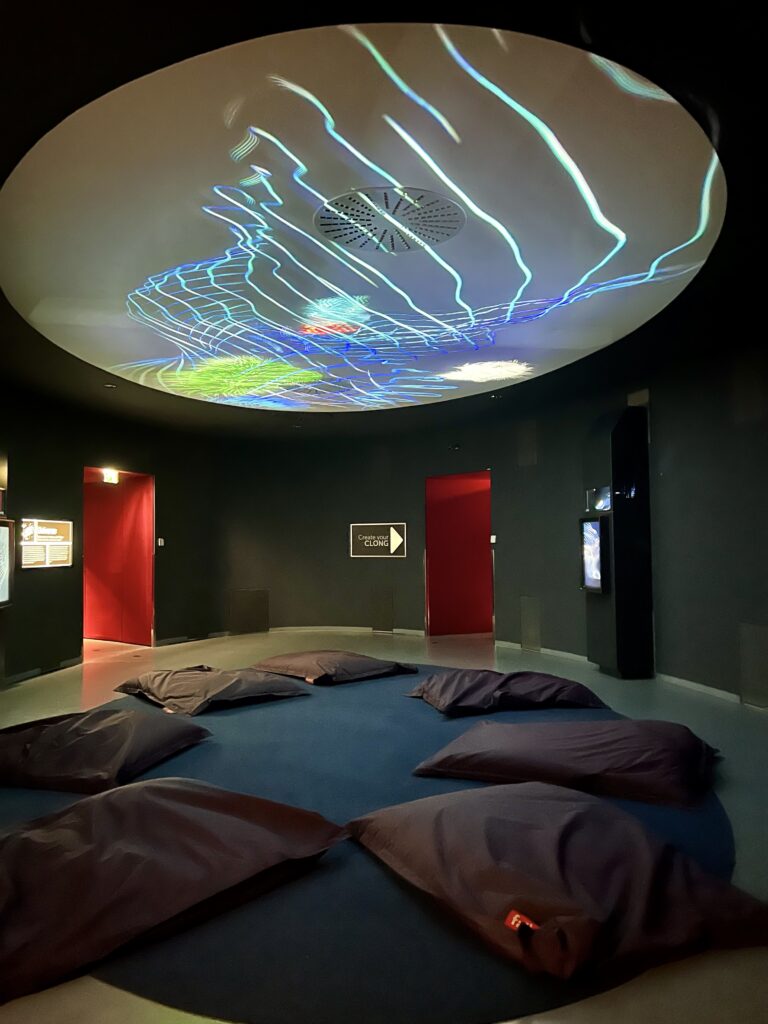
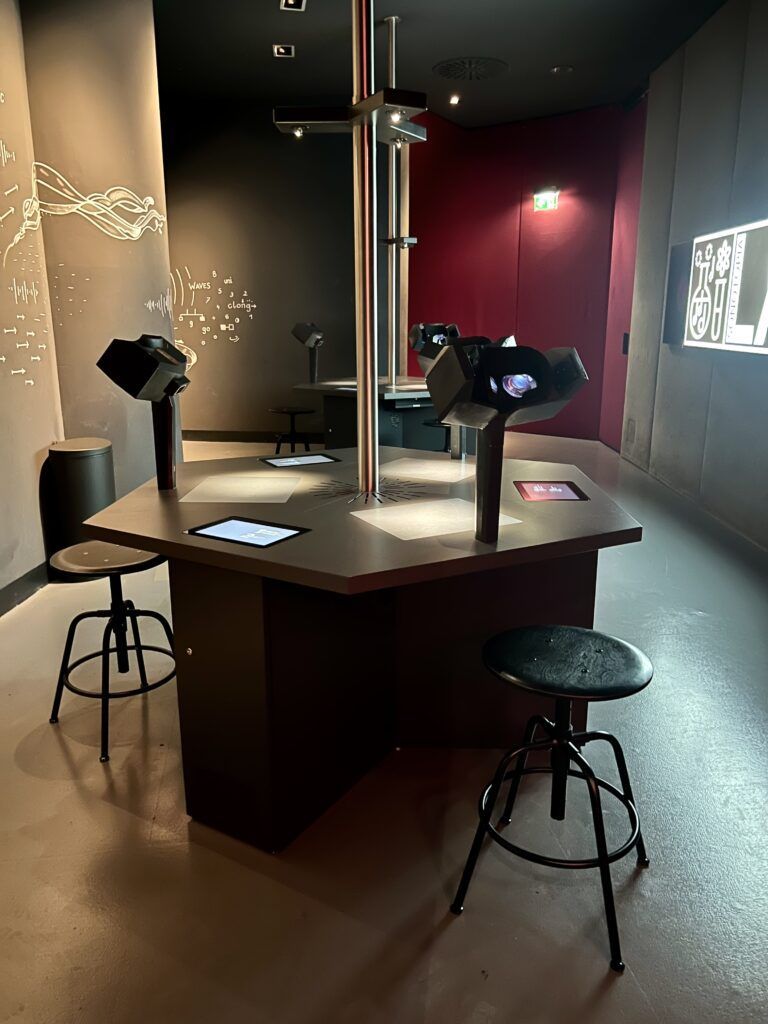
Sonotopia: Sound Universe & Clongs
On the second floor, theres’s a long line of modern paintings in what is called the Clong Gallery.
Then, you enter a unique sound universe where you can relax on pillows. The beings and forms that move above you are called “clongs.” A clong is a genetically unique sound creature whose visual and acoustic appearance is set by you alone.
In the directly adjacent Sonotopia Lab, you can create your very own unmistakable sound being — a personal sound-creature, according to your own imagination.
I must admit that I skipped over this area rather quickly. But I think kids would love it.
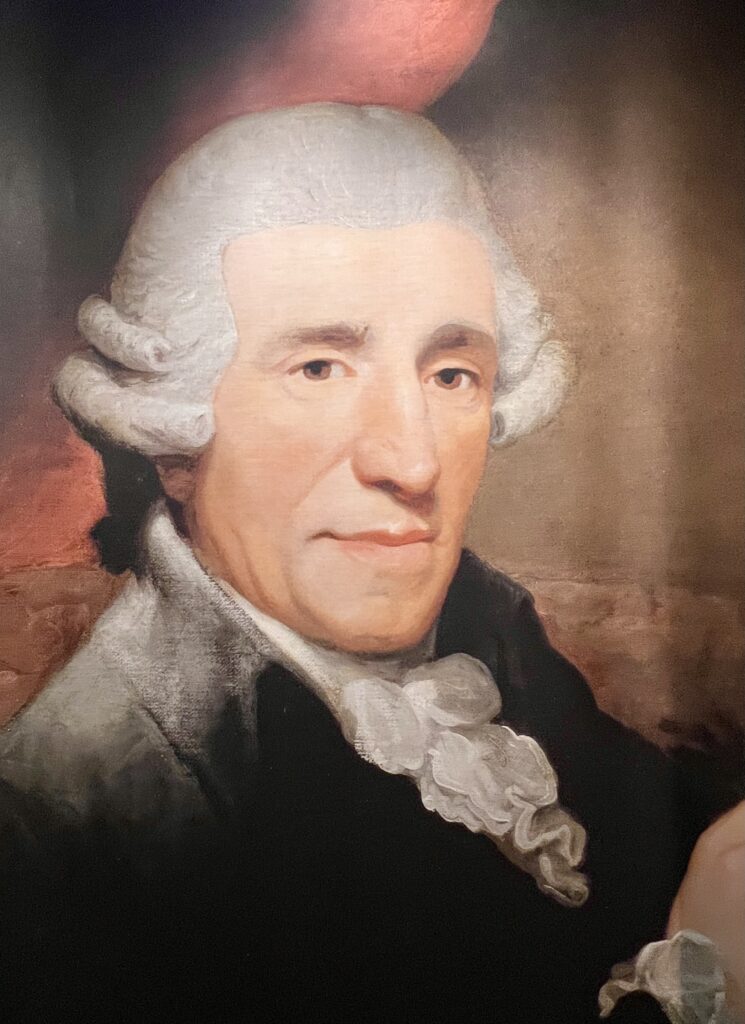
The Great Composers
This was my personal favorite part of the museum. There are fine audiovisual exhibits on Vienna’s three great musical heroes — Hayden, Mozart, and Beethoven.
The rooms feature, biographical details and documents, instruments from the time, and copies of original sheet music.
You first walk into a room filled with busts and step onto the sound carpet. It plays the music of the composer when you enter his dedicated room
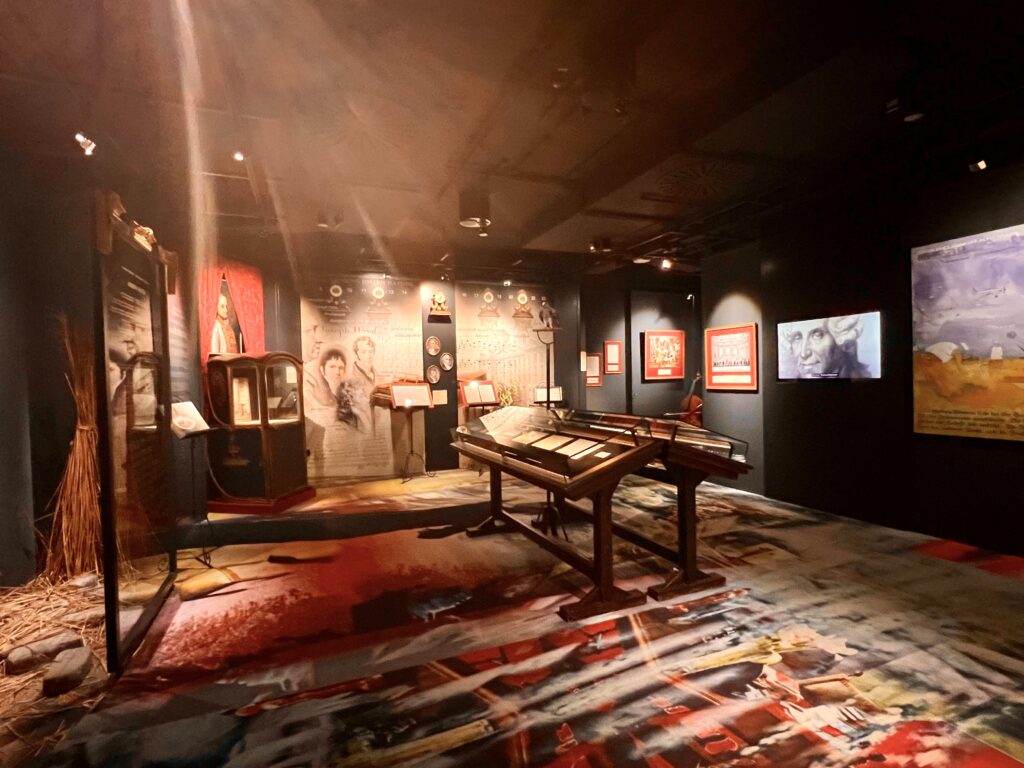
Hayden Room
The Haydn Room is a tribute to Joseph Haydn, known as the “Father of the Symphony” and the “Father of the String Quartet.” He was an inventive spirit who composed 83 quartets.
You can listen to some of Haydn’s most famous compositions, including symphonies and chamber music, and learn about his musical innovations.
The room also offers insights into Haydn’s sense of humor and his influence on classical music.
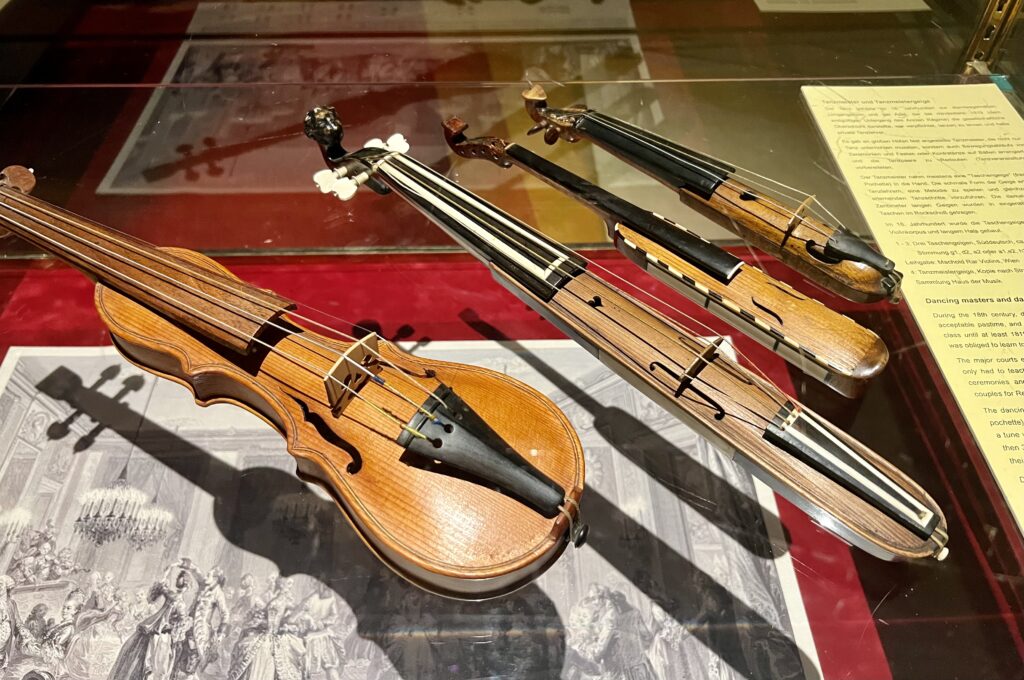
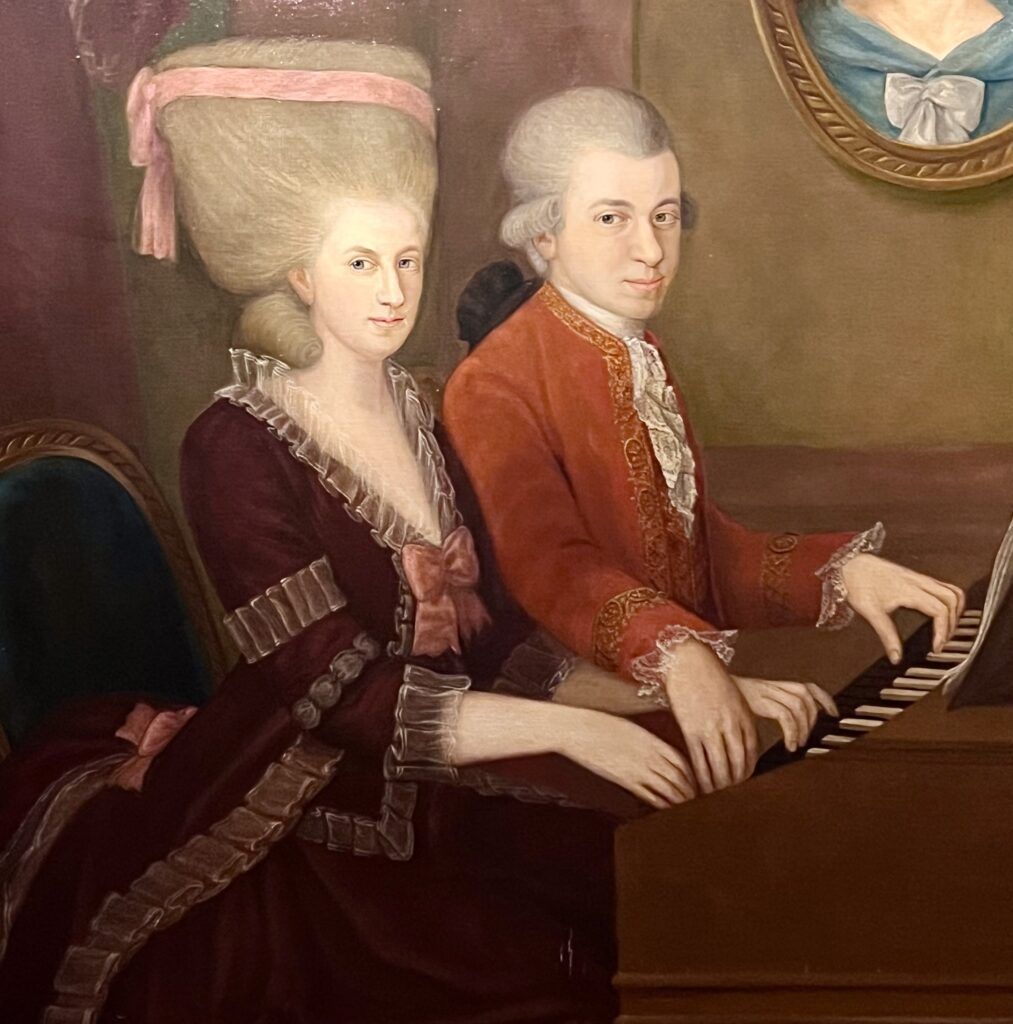
Mozart Room
The Mozart Room is dedicated to the genius of Wolfgang Amadeus Mozart, one of the most celebrated composers in history.
You’ll see portraits, musical scores, and a piano Mozart played on. You can listen to excerpts from Mozart’s operas, symphonies, and piano concertos.
And learn about how much the composer liked dancing and balls. He even wanted to dance as the Harlequin at the Salzburg Music Festival.
There’s an interactive exhibit called NAMADEUS that allows you to turn your name into an original Mozart composition.
There’s also a Waltz Dice Game. Each face of the dice represents a short melody. By throwing the dice a number of times, you “compose” a piece of music.
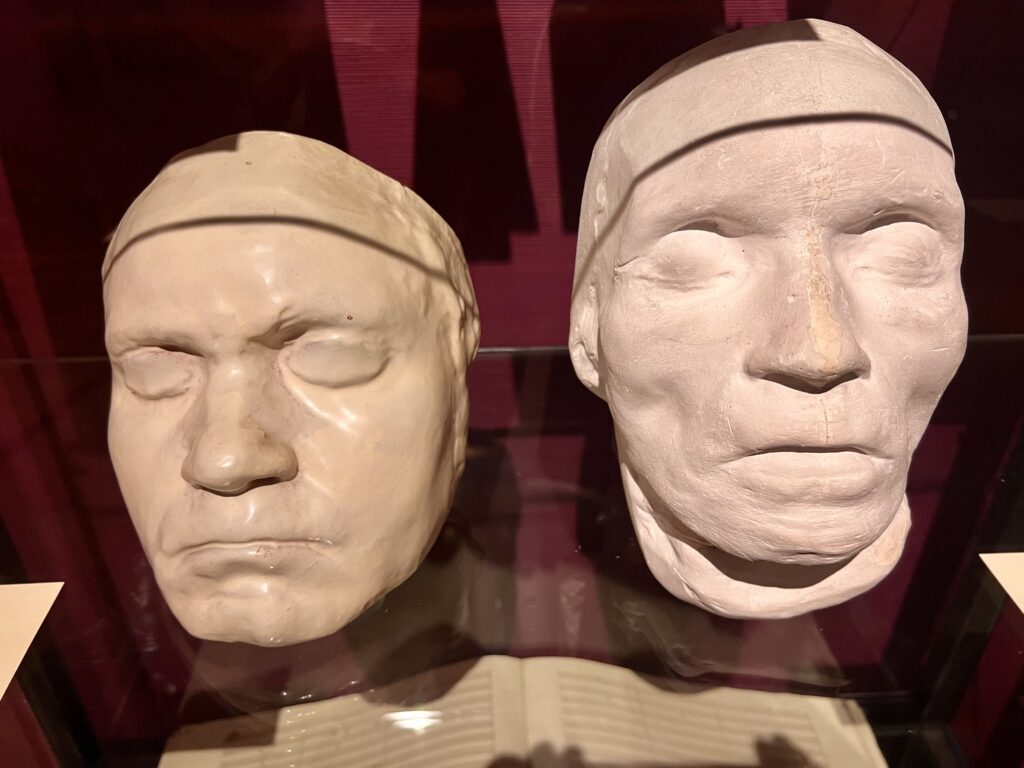
Beethoven Room
The Beethoven Room pays homage to Ludwig van Beethoven, a composer whose music bridged the classical and romantic periods.
You’ll also learn about his not so happy love life, his domestic life, and food preferences (fish and game). You’ll also learn that he was not a good tenant, always fleeing before the rent was due.
You can see a copy of the title page to Beethoven’s manuscript for his 3rd symphony, Eroica. He crossed out the original dedication to Napoleon with some ferocity.
There’s also a copy of the Heilgenstsadt Testament. It’s the famous letter Beethoven wrote to his brothers over his growing frustration with his hearing loss. And you can see his life and death masks.
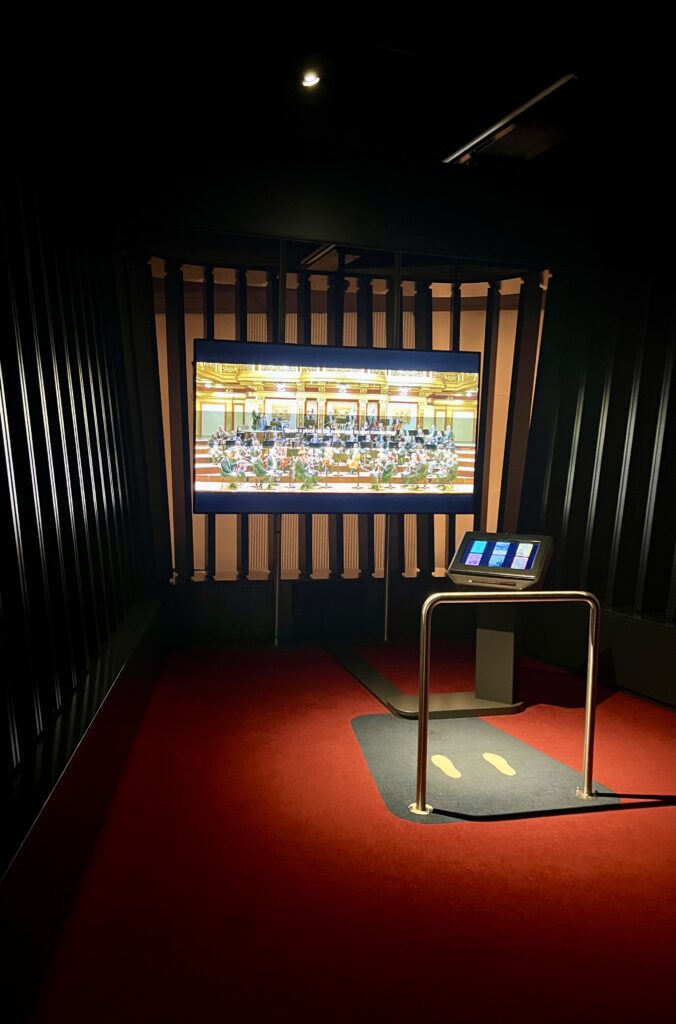
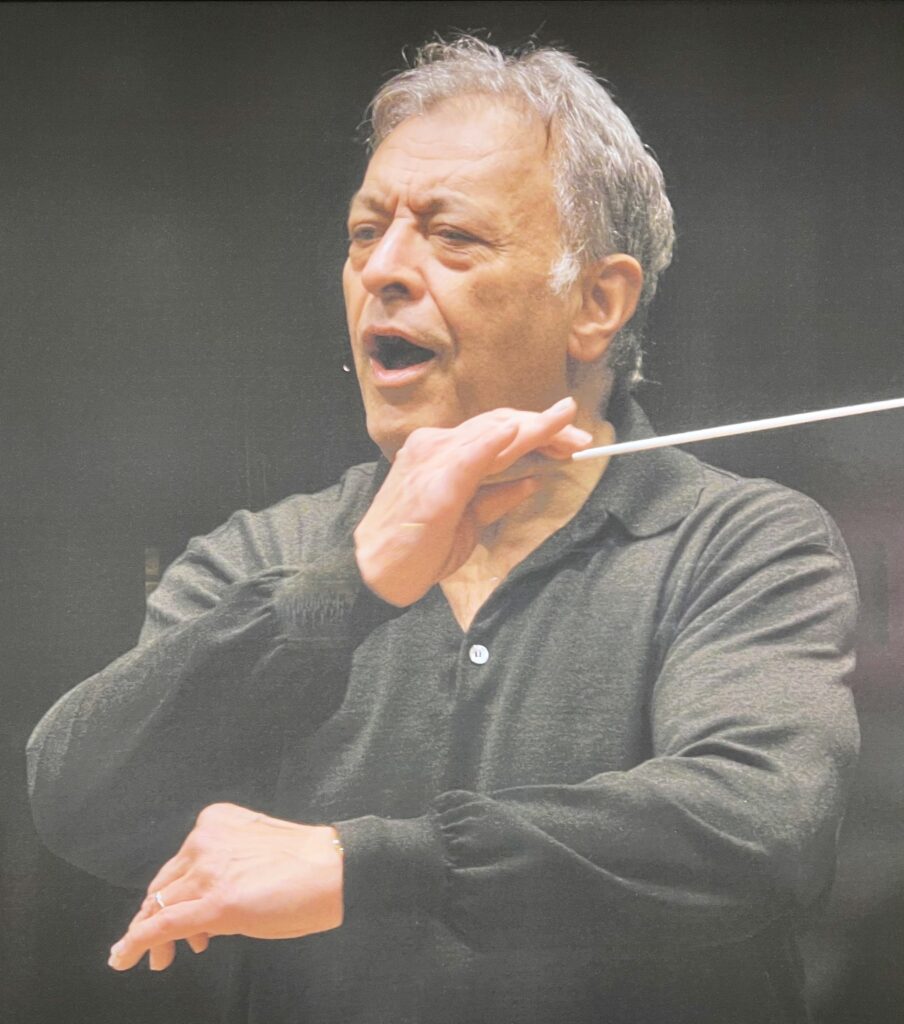
Virtostage
On the top floor, you’ll find the Virtostage. I thought this might be the most crowded part of the museum. But I had the place to myself (perhaps because it was mid-October).
You can step up and conduct a video projection of the Vienna Philharmonic. Your guide is Zubin Mehta, one of the world’s leading conductors.
Simply take the baton in your hand, select a piece of music on the digital music stand, and take over as conductor. You control the pace of the music with your baton.
It’s not as easy as you would think. If you slow down or screw up, the musicians sit down and complain. But if you succeed, you’ll see some dedicated musicians and get a round of applause.
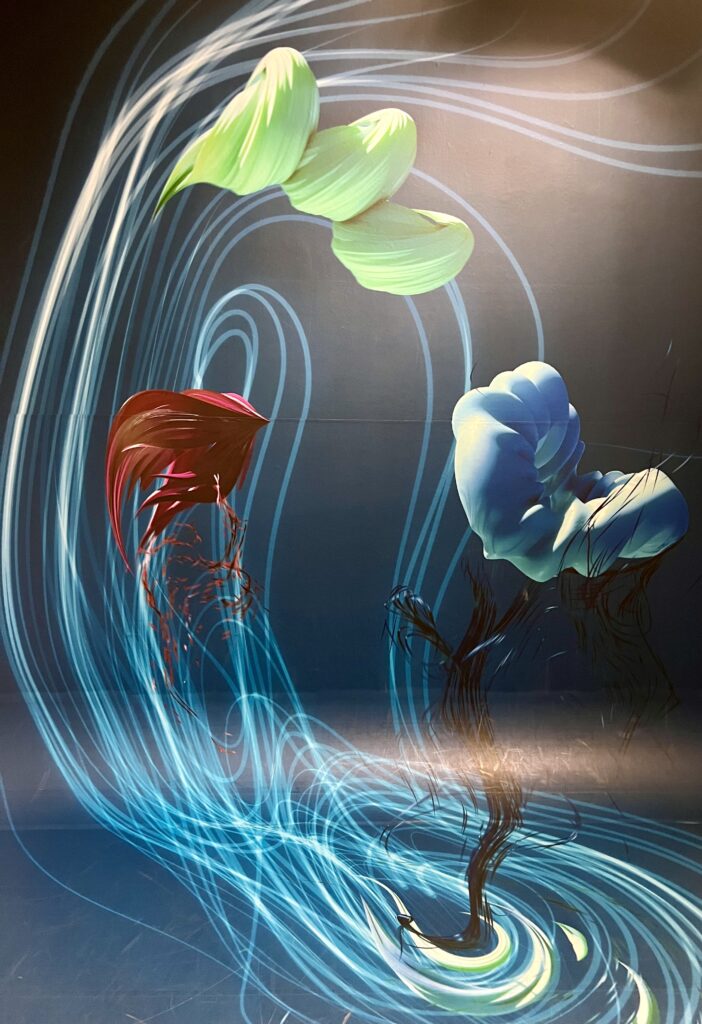

Practical Guide & Tips For The House of Music
Address: Seilerstätte 30, 1010 Wien, Austria
Hours: Open daily from 10:00 am to 10:00 pm.
Tickets:
Prices are 16 euros for adults, 12 euros for students, and 5 euros for those under 12. A family ticket is 33 euros. Admission is free with the Vienna Pass.
Tickets are half price after 8:00 pm. You can scan a QR code for the audio guide.
If you’re a real music fan, you can book a 3 hour guided tour of Vienna’s famous music sites.
How Long To Spend:
It’s not a big museum, so you could spend just an hour there if you’re pressed for time. But you will need more time if you want to play and conduct. I think a more thorough visit would take 2 hours. If you are a music lover and want to read and experience everything, budget 3 hours.
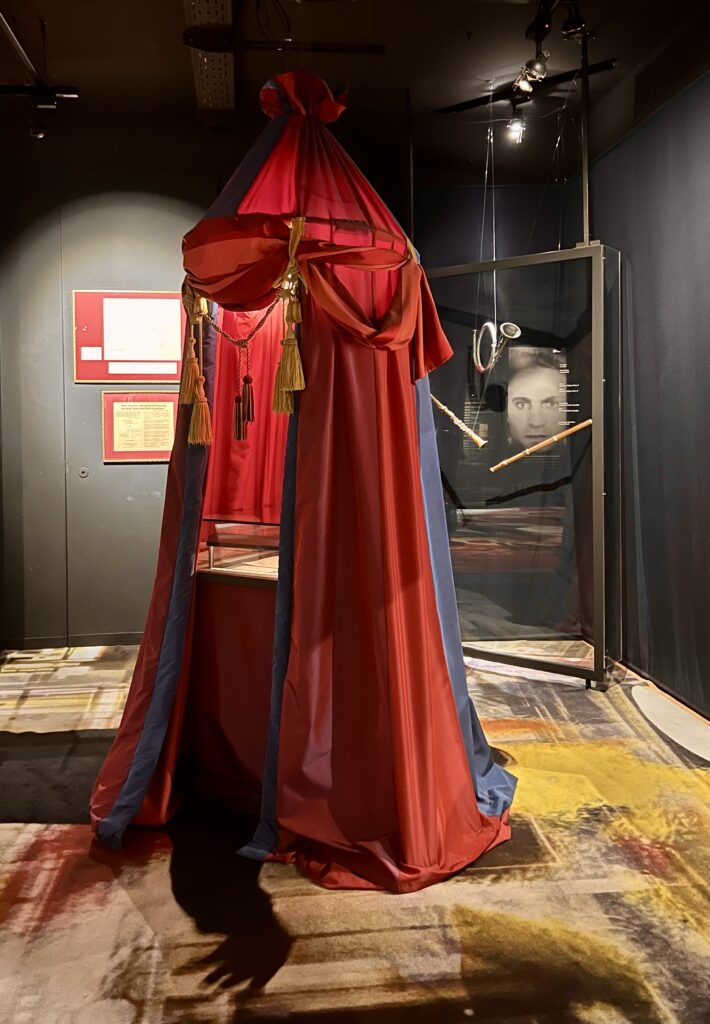
Concerts: The museum frequently hosts musical events and concerts in the evening.
Is The House Of Music Worth Visiting?
Vienna is a city with a rich musical history and world famous orchestra. Even today, music defines the city. So it only makes sense to visit its music history museum. Plus, the interactive exhibits make it more fun for all.
If you’re trying to decide between the House of Music and the other small composer houses, pick this one. It’s a real cut above the Mozart House, for example.
I hope you’ve enjoyed my guide to the Haus der Musik. You may enjoy these other Vienna travel guides and resources:
- 3 days in Vienna itinerary
- guide to Klimt paintings in Vienna
- guide to the Beethoven trail in Vienna
- what to do in Vienna in winter
- best museums in Vienna
- guide to the Sisi Museum
- guide to the Kunsthistoriches
- guide to the Vienna Secession
- guide to the Albertina Museum
- guide to the Freud Museum
- guide to the Secession Museum
- guide to St. Stephen’s Cathedral
If you need a guide to the House of Music, pin it for later.

